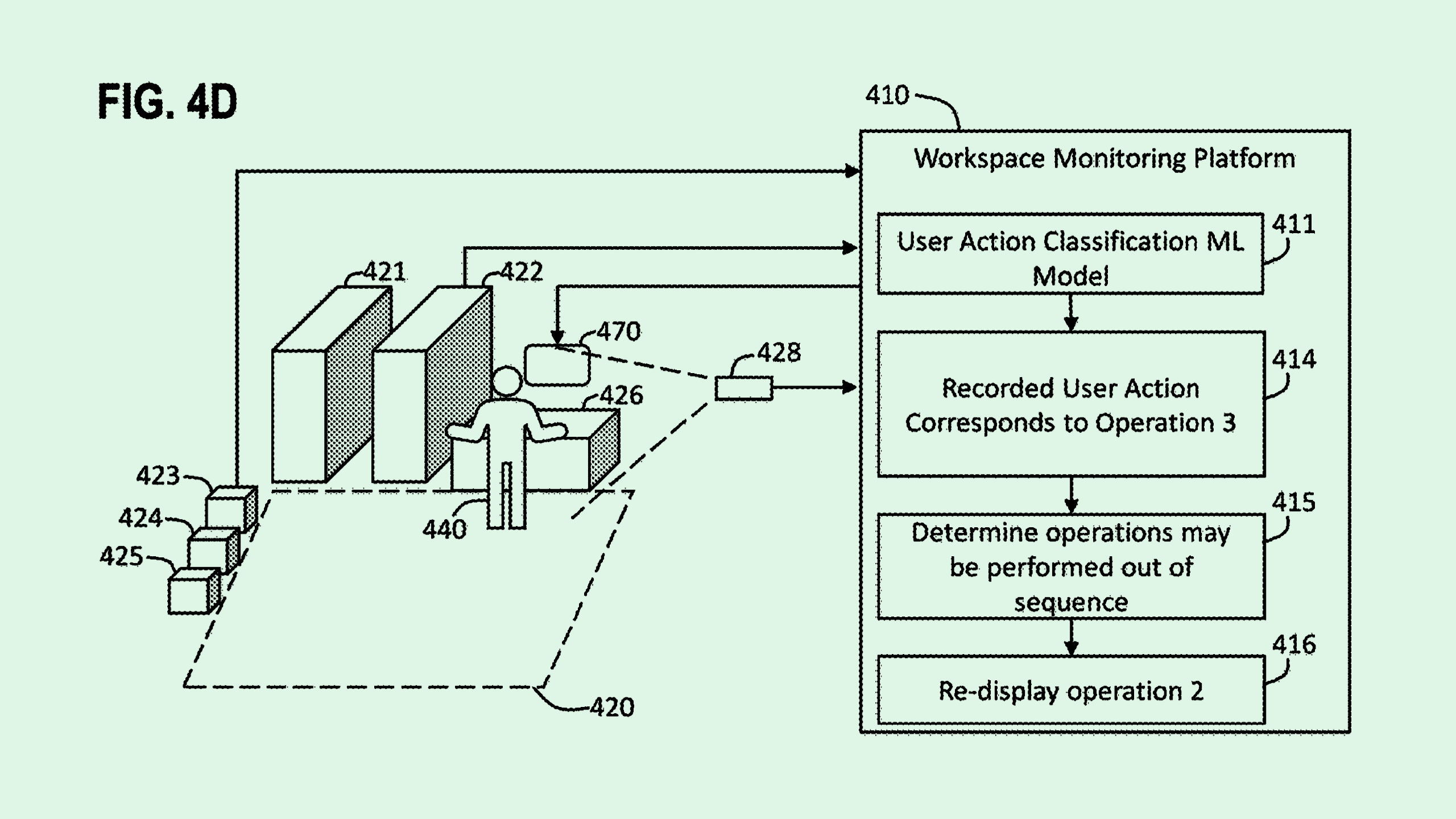Oracle Employee-Tracking Patent Points to Increased AI-Powered Workplace Surveillance
While this could improve safety on increasingly automated factory floors, these precautions may come at the expense of employee privacy.

Sign up to uncover the latest in emerging technology.
Oracle wants to track employees to a T.
The company filed a patent application for “task management with image-capture monitoring of user actions.” As the title of this filing implies, Oracle’s tech tracks a person’s actions in real time as they go through manufacturing tasks, course-correcting when needed. Think of it like “Dance Dance Revolution,” but for a factory floor.
To start out, the system displays instructions on a screen so a person can properly complete a task. While the person is performing said task, the system continuously analyzes the video stream, using a machine learning model to identify and track certain actions. The system detects when a person completes certain actions, and transitions the instructions to the next sequence.
When a person performs an action incorrectly, the system will notice and automatically present instructions to correct it, including undoing and redoing certain actions, or reordering certain tasks within a sequence.
Along with watching employee actions down to the letter, Oracle’s tech includes predictive analytics that can determine start or end times for these tasks, as well as anticipate delays. Additionally, it may use image recognition to identify a “particular user in a workspace” and the tasks associated with them, as well as progress on those tasks.
This patent adds to a pile of filings from companies like Intel, Amazon, Nvidia, and more that aim to bring AI into factory floors. However, while several of these focus on mistake avoidance or task management, they also generally involve instructing a robot or autonomous machine, not humans themselves.
As factory floors become more and more automated, there’s an argument to be made that tech like Oracle’s could be helpful for increased safety precautions — aiming to control not just the predictable actions of robotic co-workers, but unpredictable human ones. But, depending on where the line is drawn, these precautions may come at the expense of employee privacy.
We’ve seen plenty of patents in the past that aim to keep a close eye on employees, including Microsoft’s filings for tech to monitor tone in emails and off-the-clock working, and Snap’s patent for emotion detection in the workplace. These patents may signal a growing desire by tech firms to keep a far tighter watch of their workforces.
Employees, however, may not readily embrace this kind of monitoring: A Pew Research Center survey found that respondents more often opposed AI-based tools that monitor things like workplace interactions, productivity, task progress, and movement.











